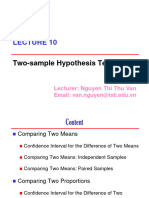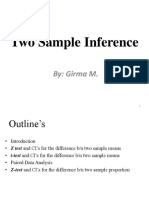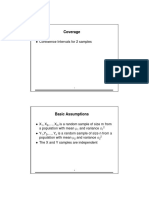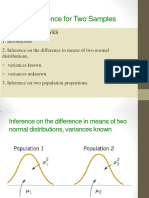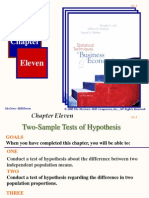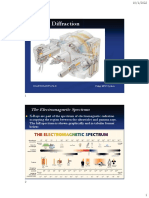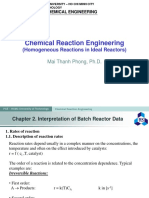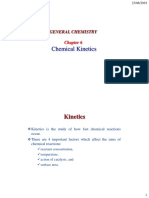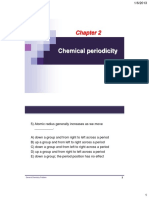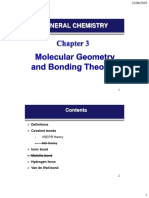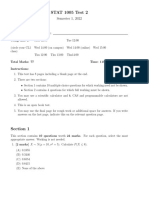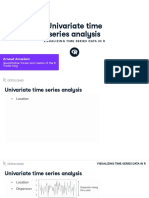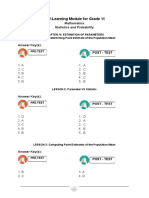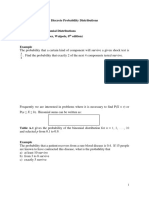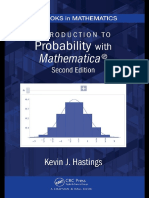0% found this document useful (0 votes)
43 views35 pagesProbability and Statistic Chapter6
The document discusses inferences based on two samples, specifically paired samples and two independent samples. It covers the distribution of differences between paired samples, which follows a normal distribution. It also discusses confidence intervals and hypothesis testing for the difference in means between paired samples using a t-test. As an example, it analyzes data on zinc concentrations in river water to test if bottom water concentrations exceed surface water concentrations.
Uploaded by
PHƯƠNG ĐẶNG YẾNCopyright
© © All Rights Reserved
We take content rights seriously. If you suspect this is your content, claim it here.
Available Formats
Download as PDF, TXT or read online on Scribd
0% found this document useful (0 votes)
43 views35 pagesProbability and Statistic Chapter6
The document discusses inferences based on two samples, specifically paired samples and two independent samples. It covers the distribution of differences between paired samples, which follows a normal distribution. It also discusses confidence intervals and hypothesis testing for the difference in means between paired samples using a t-test. As an example, it analyzes data on zinc concentrations in river water to test if bottom water concentrations exceed surface water concentrations.
Uploaded by
PHƯƠNG ĐẶNG YẾNCopyright
© © All Rights Reserved
We take content rights seriously. If you suspect this is your content, claim it here.
Available Formats
Download as PDF, TXT or read online on Scribd
/ 35







